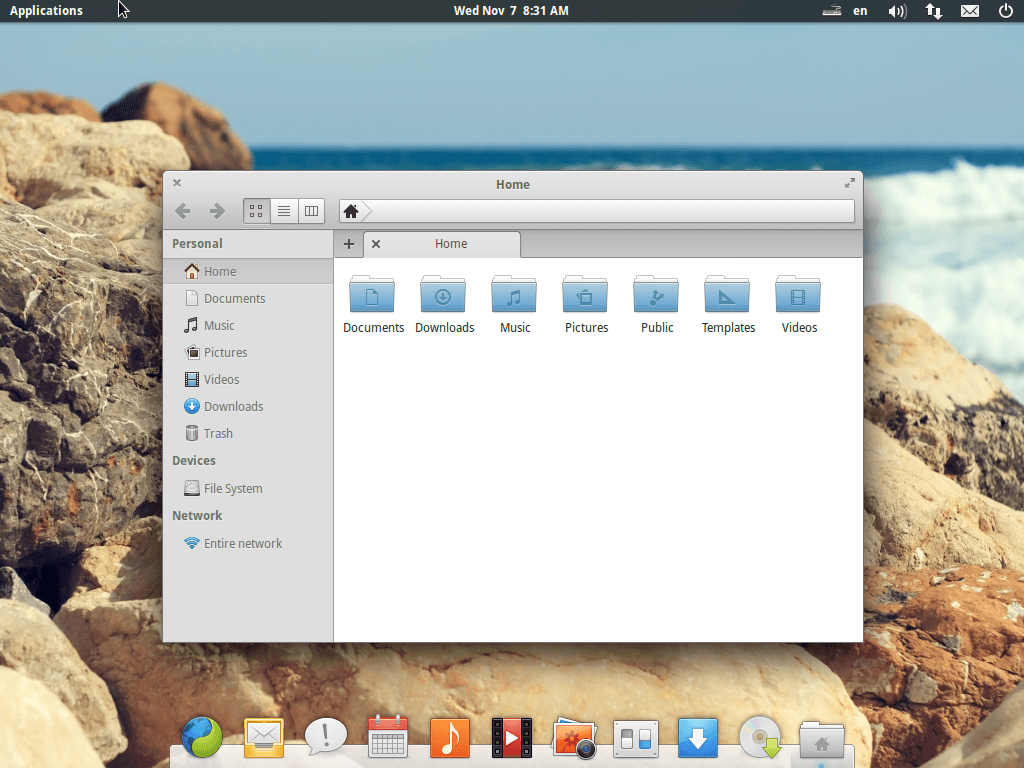

- #Elementary os free download 32 bit install#
- #Elementary os free download 32 bit full#
- #Elementary os free download 32 bit windows 8.1#
- #Elementary os free download 32 bit windows#
This is practically identical to the final installation.
#Elementary os free download 32 bit install#
This option will load the live environment, to check for hardware compatibility before we install Elementary OS. Booting from the installation medium, we select the Try elementary option. If our motherboard doesn't have a boot menu option, we must enter the BIOS or UEFI setup and manually change the boot order.įor more information on the subject, see our full guide:Ĭhange the Boot Order to Boot from USB or DVD on BIOS / UEFI Install Elementary OS FreyaĪfter this preparation, it's time to install Elementary OS. The easiest way is if our motherboard has a boot menu, what we can access with a specific hotkey on system startup. To install any operating system, we need to change the boot order in our motherboard's BIOS or UEFI interface, so the first boot device is the startup medium. If the "Turn on fast startup option" isn't available on our PC, we don't need to do anything. We should leave this option unchecked for as long as we have a second operating system on dual-boot. and uncheck the "Turn on fast startup" checkbox. select the "Change settings that are currently unavailable". click on "Choose what the power buttons do".
#Elementary os free download 32 bit windows#
We just need to type "Power Options" on the start screen of Windows 8.1. While this is great when we have a single operating system, on a dual-boot configuration, either with Linux or another version of Windows, fast startup can lead to file corruption and lost data. The fast startup feature hibernates part of the system on each shutdown and loads it faster on the next boot.
#Elementary os free download 32 bit windows 8.1#
There is a reason that Windows 8.1 boots up faster than Windows 7 on the same system. Disable Windows fast startup (Windows 8.1 only) So, the fourth partition is an extended partition, which can hold up to 99 logical partitions. The 4GB and 1022MB partitions are logical, because an MBR disk can only hold four primary partitions. and for the /swap partition, giving it the rest of the unallocated space.Īfter the partitioning, our drive should look something like that. We repeat the procedure for the /home partition, giving it 4GB (4096MB). We will do this through the Elementary OS installation. There is no need to assign a drive letter or drive path. The first will be for the root "/" partition, which will contain Elementary OS, the second for the "/home" partition which will house our personal settings and files, and the third for the "/swap" partition, which is Linux's Virtual Memory.įor the root partition, 10GB (10240MB) is more than enough. On the newly unallocated part of the disk, we right-click and create a "New Simple Volume.". In the example, we are shrinking the partition by 15GB (15*1024=15360MB), which should be enough for most cases. We then right-click on the partition of our choice, and select "Shrink Volume".Īn average Linux installation doesn't need much space. We should first check that our disk is of the "basic" type, because it is impossible to dual-boot Linux on a dynamic drive. So, we should press the Windows key + R, and on the Run command window type diskmgmt.msc. It is, however, much safer if we already create those partitions from within Windows, it significantly reduces the chance that anything could go wrong.

The Elementary OS installer is perfectly capable of shrinking a Windows partition and creating the Linux ones. In Windows 7, the respective options are called Error-checking and Defragmentation.Ĭreate Elementary OS installation partitions In Windows 8.1 we should run the error checking app, and the "Optimize and defragment drive", provided our disk is an HDD - SSD drives don't need to be defragged. So, we should right-click the drive where we intend to install Elementary OS and select "Properties". Prepare Windows for Partitioningįor a successful partitioning operation, it is important that everything on the disk's filesystem is in order.

#Elementary os free download 32 bit full#
We could also keep a full Windows image backup, using a "Norton Ghost"-like utility, such as the free AOMEI Backupper, so we can fully restore our Windows installation, complete with the programs, in case anything goes wrong. So, for the absolute worst case scenario, we should backup any important files on an external hard drive. For more information on creating Linux installation media, check out our full guide:Ĭreate a Linux Installation USB or DVD for any Distribution Make a full Windows BackupĬreating a dual-boot installation is usually safe, but an extra backup never hurt anyone.


 0 kommentar(er)
0 kommentar(er)
